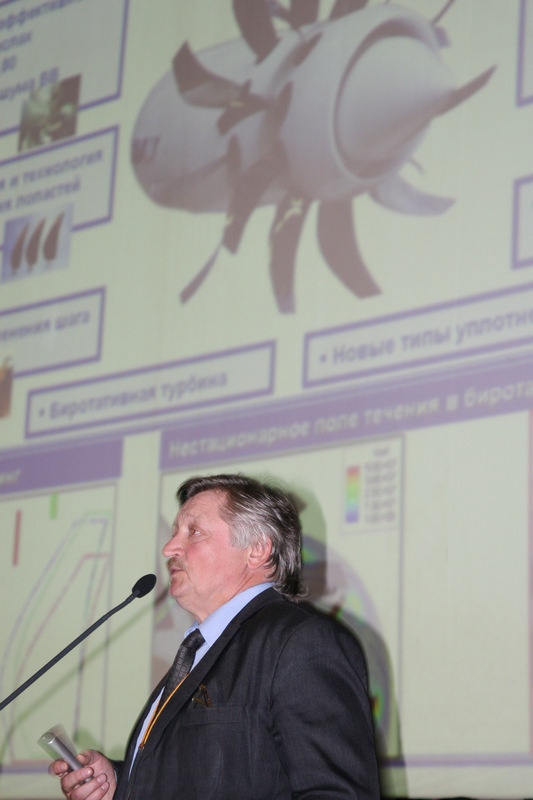At 5th Russian Conference on Aeroacoustics, CIAM researchers presented methods of aircraft noise reduction
On 25-29 September 2017, specialists of the P.I. Baranov Central Institute of Aviation Motors (CIAM, a subsidiary of the National Research Center ‘Zhukovsky Institute’) took part in the 5th Open Russian Conference on Aeroacoustics. The event was organized by the N. E. Zhukovsky Central Aerohydrodynamic Institute (TsAGI) with the support of the Russian Foundation for Fundamental Research, and took place in Zvenigorod, Russia.
Noise from aircraft has a negative impact on the environment. The noise problem is rather acute, because it causes discomfort to people, especially those living in the areas close to airports.
Noise emitted by aircraft is regulated through the ICAO international standards. They limit the noise level from planes and helicopters in residential areas and noise in cabins and on board the airborne vehicles. Thus, acoustic characteristics become a key determinant of the civil aircraft’ competitiveness. Increasingly toughening ICAO standards challenge the aircraft manufacturers to develop new aircraft without increasing the noise level and to implement new noise reduction technologies for the aircraft engine which is the main source of the problem.
Starting from 1962, the Conference consolidates leading engineers and scientists working in the field of aeroacoustics and aviation ecology. This time, it once again became a platform for an open discussion of aviation noise research results and determination of development directions.
A specific feature of the 5th Russian Conference is that it was attended by a large number of young specialists from different enterprises: ‘applied’and academic institutes, universities, design bureaus and industrial enterprises.
During the panel sessions, the CIAM scientists presented 16 reports. They focused on such aeroacoustics aspects as: aviation aerodynamic noise sources, aircraft noise in residential areas and aircraft engine acoustics, acoustic measurement methods, mathematical modeling.

CIAM’s department head Anatoly Polev made a panel report presenting perspectives of the aircraft engine construction in Russia and the ongoing CIAM’s research works on aircraft engine noise reduction. ‘Forming a scientific and technological reserve and try-out of critical technologies, elements, components and systems are crucial to success in development of new aircraft engines’, - he noted. Anatoly Polev highlighted the development of the PD-35 engine powerplant which will power future widebody civil and cargo aircraft (2020 technologies) on the core of the PD-14, as well as the development of 6th generation aircraft engines (forward-looking 2030 technologies) and touched on the acoustics problems related to future double-flow turbojet engines. ‘One of the features of the future engines is that, in view of a decrease of noise of the fan as a primary noise emitter, it is necessary to develop a range of measures related to reducing the noise emitted by all other components of the powerplant’, - he emphasized.

CIAM’s department sector head Anton Rossikhin presented in his reports results of mathematical modeling of acoustic characteristics for contra-rotating fans and briefed on harmonic approaches to the impeller machines’ noise calculation.
‘One of the main aeroacoustics challenges is to ensure that the future air transport development won’t create further noise pollution. This has to be achieved respecting all the specificities of the noise generation process in connection with both the overall aircraft construction in general and its separate noise generating elements’, – explains CIAM’s division head Sergey Krasheninnikov. – Our specialists presented both data on theoretical aeroacoustics issues related to characteristics of soundproofing designs and separate noise generators, in particular jet exhaust, compressor, and testing results’. The CIAM’s researchers examined problems related to the use of computing technologies to address aeroacoustics challenges. ‘Testing only is not enough, - Sergey Krasheninnikov notes. - Mathematical models of separate physical processes must be built. An inter-validation of mathematical modeling and experimental testing is necessary. Both tools must work’.
Being a permanent ICAO Member State, Russia aims to reduce the noise impact of aircraft. Within the Conference, the CIAM’s researchers not only identified the aeroacoustics’ challenges faced by the Russian aircraft engine construction industry, but also presented solutions based on results of the research accomplished by the CIAM.
 Eng
Eng Rus
Rus